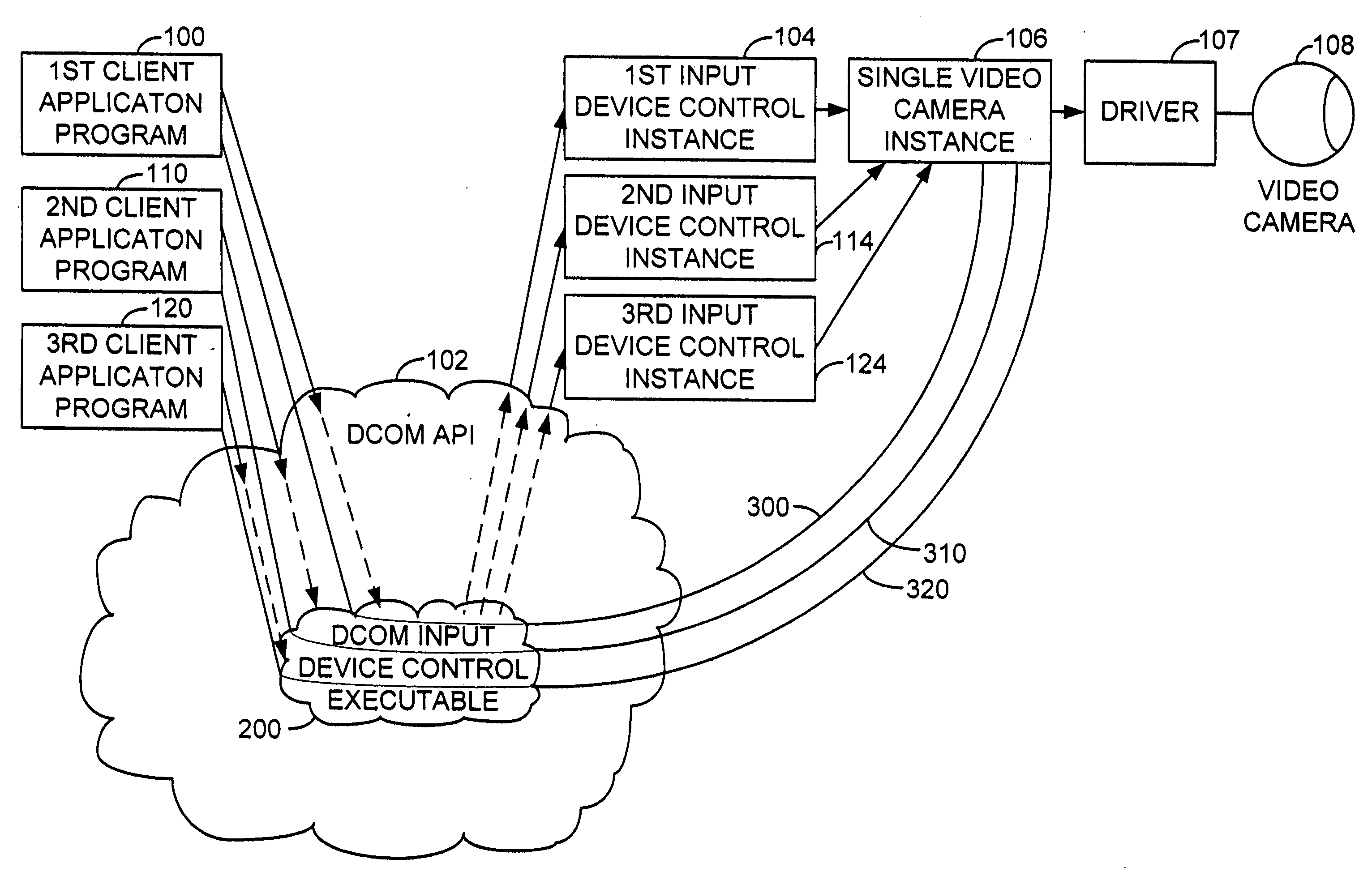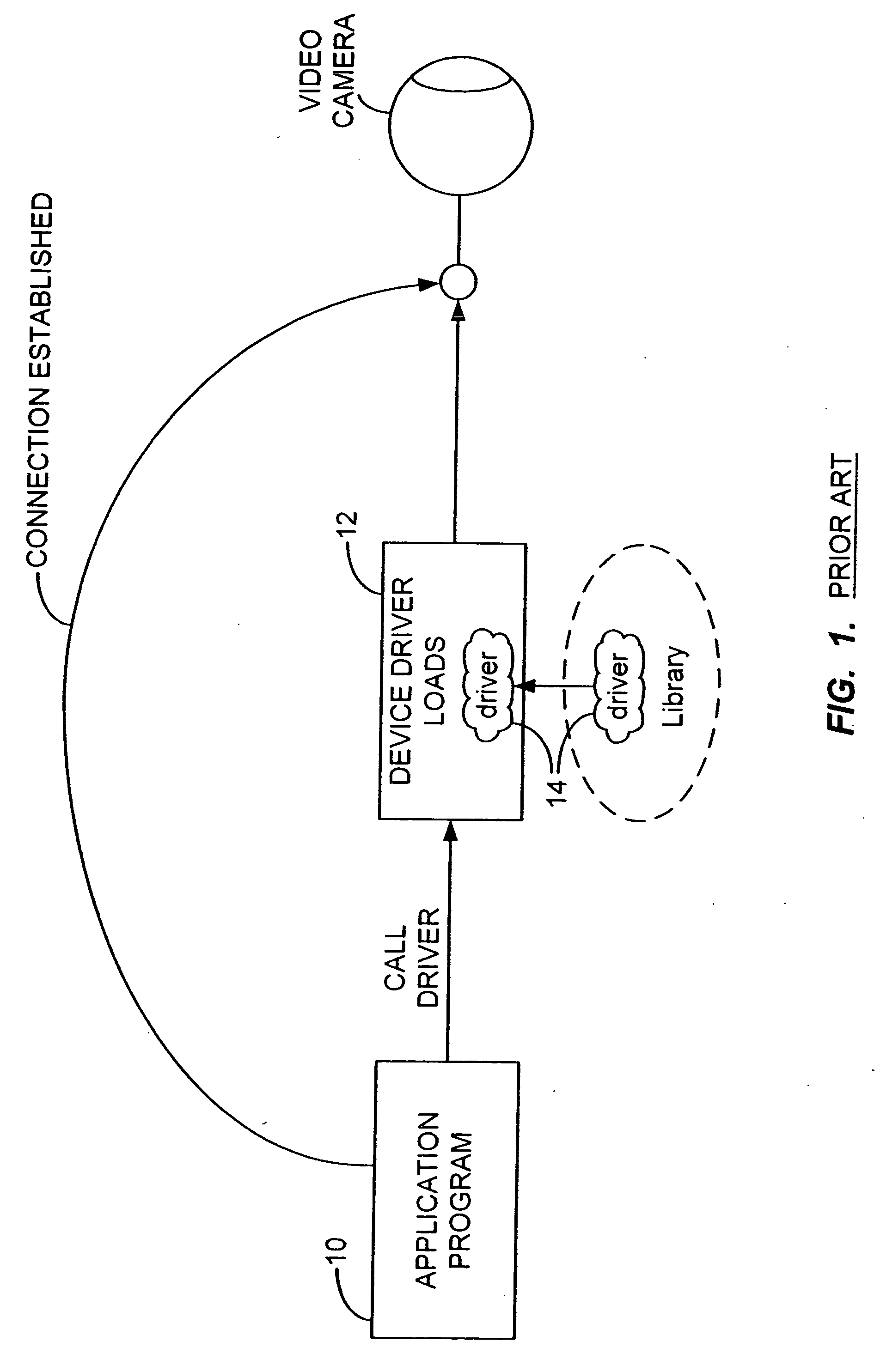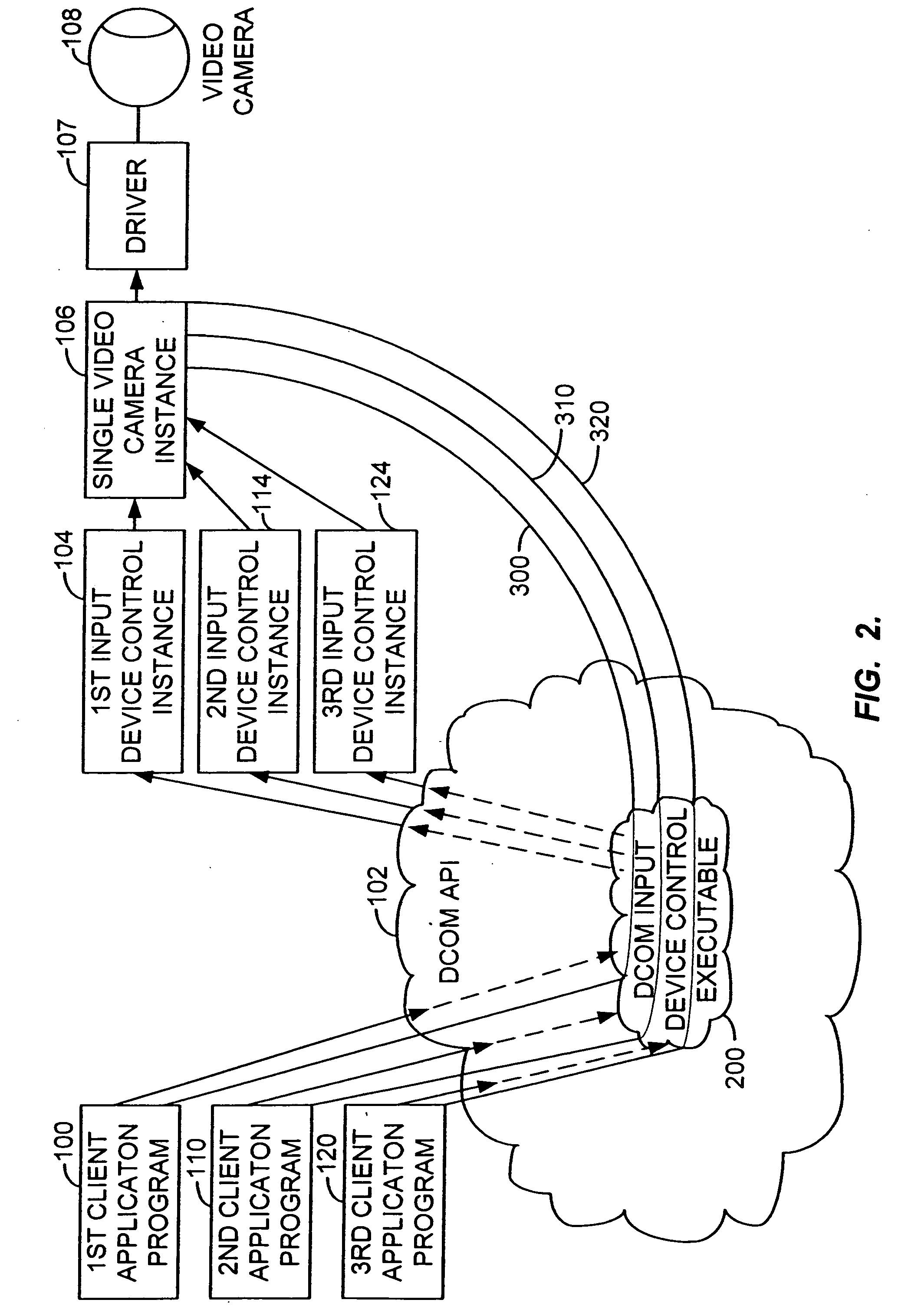Method and system for providing multi-media data from various sources to various client applications
a multi-media data and client application technology, applied in the field of media source input devices, can solve problems such as contingency problems, increasing complexity and usability, and contingency problems
- Summary
- Abstract
- Description
- Claims
- Application Information
AI Technical Summary
Benefits of technology
Problems solved by technology
Method used
Image
Examples
Embodiment Construction
[0025]FIG. 2 shows a block diagram depicting one embodiment of the present multi-instance input device control program (MIIDC) in a PC / Windows environment. In this embodiment, the input device is a video camera, and the executable program is a DCOM executable server. This figure shows how multiple application programs may share a single video camera. Once a first application program 100 calls to connect to the video camera 108, the call is passed to the DCOM application program interface (API) 102. The appropriate Microsoft documentation or the Microsoft website may be referred to for a more detailed description of DCOM. The DCOM API 102 handles the loading of the DCOM executable program and establishes a connection from the application program to the DCOM executable program 200. The DCOM server 200 creates a single video camera instance 106 and a first MIIDC instance 104. Next, the DCOM server 200 connects the single video camera instance 106 to the video camera driver 107, the vid...
PUM
 Login to View More
Login to View More Abstract
Description
Claims
Application Information
 Login to View More
Login to View More - R&D
- Intellectual Property
- Life Sciences
- Materials
- Tech Scout
- Unparalleled Data Quality
- Higher Quality Content
- 60% Fewer Hallucinations
Browse by: Latest US Patents, China's latest patents, Technical Efficacy Thesaurus, Application Domain, Technology Topic, Popular Technical Reports.
© 2025 PatSnap. All rights reserved.Legal|Privacy policy|Modern Slavery Act Transparency Statement|Sitemap|About US| Contact US: help@patsnap.com



